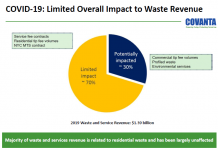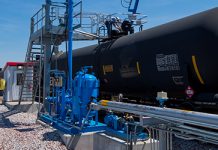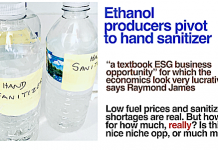The Great Ethanol Debate: Shoddy Economics all ‘Round.
Like many environmentalists, I’m not a big fan of the ethanol industry, especially corn ethanol. From a net energy standpoint, even advocates agree that you only get a little more energy out than the energy you put in (Energy Return on Energy Invested or EROEI of 0.9 to 1.5, depending on whom you ask… some say it’s much lower.) At this point, most environmentalists simply decide that ethanol isn’t sustainable enough for them, and go back to talking about photovoltaics (EROEI around 8, PDF) and wind (EREOI 30-70, PDF). The last two are from my calculations from numbers given as energy payback (As an aside, I think most of these measures of energy economics are crude and only give a partial picture. We should really be looking at energy net present value (NPV) or internal rate of return (IRR), analogous to economics NPV or IRR which would apply a discount rate to future energy flows, for all the same reasons we don’t look at payback or similar measures in economics.)
If we did take a net present value approach to energy return on investment, we’d find that ethanol started looking a lot better, because we can use the ethanol as soon as it is made, a process which could happen within a year of the first seed of corn being planted, in comparison to solar photovoltaics, which, if they have an energy payback of around 4 years and last 30 years, will end up having and "Energy IRR" of around 12% (this number is for conventional crystalline silicon: Thin film and concentrating PV have potential to be a lot better because of lower energy use in manufacture), compared to an "Energy IRR" for corn ethanol (using a median 1.2 EROEI figure and a one year lifecycle) of 20% (although the uncertainty in this number is much larger than the uncertainty in the number for PV.)
So the bigger problem for me is not Energy Payback, but the environmental damage associated with the way we raise corn. Energy isn’t everything. I feel that the "low energy return" argument does not hold a lot of water. My main problem with corn ethanol lies in the negative externalities of corn production, such as high water use, fertilizer runoff, and soil mineral depletion. And then there’s always the food vs. fuel debate, where even the IMF is weighing in.
Is the ethanol industry a good long term investment?
Clearly, the debate on the possible benefits of corn ethanol is far from settled. Regardless, ethanol has strong political support, and we can expect continued rapid increase in US ethanol production. Does it follow that the industry will produce good returns for investors? Will increases in production be accompanied by increases in profit, or will ethanol producers find they cannot sell their product at a price high enough to cover their full costs? To answer that, we have to understand the competitive forces in play in the industry, which I will look at from Michael Porter’s Five Competitive Forces Model. The more and stronger competitive forces are at play, the less attractive the industry will be in terms of producing attractive returns on investment. These forces are the threat of new entrants, the bargaining power of suppliers, the bargaining power of buyers, internal competition, and the availability of substitutes.
Threat of New Entrants
Corn ethanol production is easy to establish. Distilling grain into alcohol has been around for all of human history, and while the techniques have been refined, the basic production process is well known. The remarkable number of new plants being built testifies to this. This is a big strike against the long term profitability of the industry.
Bargaining Power of Suppliers
The major suppliers to the ethanol industry are corn growers and the suppliers of process heat (often produced by natural gas, but more innovative firms are using gas from anaerobic digestion of manure from cows which also eat some of the distillers grain byproduct.) In most cases, these are commodities, meaning that neither the suppliers nor the ethanol industry has any real bargaining power. I consider this a modest negative for the industry, but may give competitive advantage to firms such as Archers Daniels Midland (ADM) and the Andersons (ANDE) who have vertically integrated supply chains, as well as firms who can use renewable sources of process heat to lock in energy prices.
Bargaining Power of Buyers
Ethanol is also a commodity, but it has the interesting property that it can’t be shipped through the same pipelines as other liquid fuels because it’s water soluble. Hence, ethanol must be transported by truck, rail, and ship to markets that do not currently. To me, this means that ethanol producers in the Midwest are likely to have a much harder time than ones in California, such as Pacific Ethanol (PEIX), and Hawaii, where they now have a 10% ethanol mandate, but little or no local production, despite their large sugar industry.
Internal Competition
See my comments above about internal competition in the US industry, but the 800 pound gorilla here (especially for states on the East of Gulf Coast) is imported ethanol from Brazil. For the moment, that internal competition is contained somewhat by the United States’ punitive tariff, but if the political will to maintain that fails, Brazilian ethanol’s better price structure (and better energy returns, since it’s made from sugarcane) would be traumatic for the industry. In my mind, the internal competitive outlook is not very good.
Availability of Substitutes
Ethanol is a substitute for both gasoline and MTBE. At the mome
nt, much of ethanol’s momentum is due to the ban on MTBE. However, many consider ethanol to be a poor substitute for MTBE because of it can increase smog formation in some circumstances. If a better oxygenator were found for gasoline, the prospects for corn ethanol on the coasts would likely be bleak. In its E85 formulation, ethanol is touted as a gasoline substitute, and until cellulosic ethanol becomes economic (which would lead to a new set of problems for corn ethanol, and might happen much sooner than expected), we can reasonably expect that gasoline will generally be more prevalent than E85. So the economics of ethanol hinge on the lack of another substitute for MTBE, which currently puts ethanol in a good position on the coasts, where MTBE was formerly used, be puts the industry at the mercy of gasoline price swings in the Midwest.
Conclusion
Regardless of how you feel about ethanol from an environmental or net energy perspective, the prospective ethanol investor should be very careful about investing in corn ethanol producers at random. As I have argued here, vertically integrated producers, Californian producers, and producers who use renewable energy based processed heat may have a competitive advantage over a generic Midwest ethanol plant, but such competitive advantages seem slim and could rapidly vanish due to outside events.
DISCLOSURE: Tom Konrad and/or his clients have positions in the following stocks mentioned here: ADM.
DISCLAIMER: The information and trades provided here are for informational purposes only and are not a solicitation to buy or sell any of these securities. Investing involves substantial risk and you should evaluate your own risk levels before you make any investment. Past results are not an indication of future performance. Please take the time to read the full disclaimer here.









I agree with everything — except the idea that cellulosic ethanol may become economic sooner than many expect.
Time will tell on cellulosic… I’m with you when it comes to celluslosic produced with enzymes, but there are some emerging methods with an intermediate pyrolysis/syngas stem and acid hydrolysis that look interesting. It will also depened on the feedstock: there’s a company called Citrus Energy in Florida which uses orange peels (and enzymes) and claims to already be economic.
Are there economies of scale in ethanol production? If so, wouldn’t the larger firms be able to compete more effectively? It seems to me that with economies of scale, Petrobras would likely be the most competitive based on the fact that it distributes sugar-based ethanol and has a country-wide (Brazil) distribution network built up over a period of more than 20 years. (assuming no new changes in ethanol technology).